How To Sell On Amazon – The Ultimate Guide to Getting Started
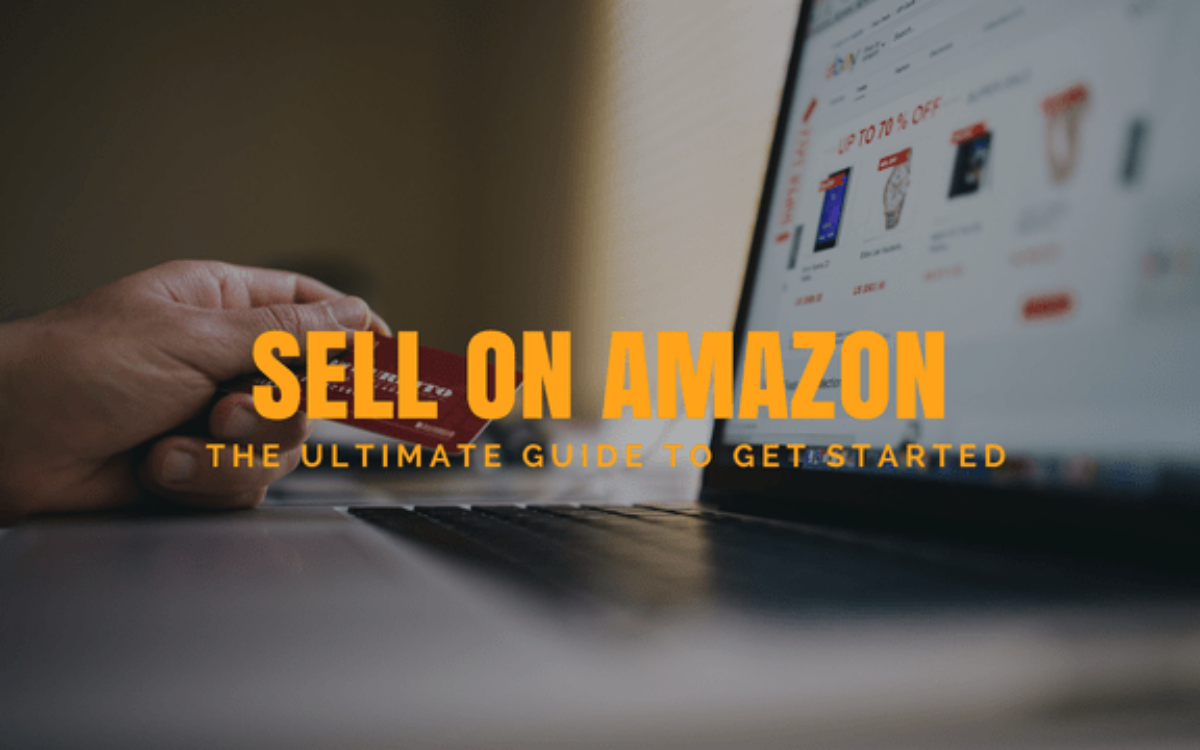
When you buy something through one of the links on our site, we may earn an affiliate commission.
You've probably heard that almost half of the things you order from Amazon are sold by third party sellers, not Amazon themselves.
You've also undoubtedly heard that Amazon is taking over the world, and is clearly the king of online retail with about 43% of ALL online retail sales happening on Amazon in 2016.
If you're putting 2 and 2 together, you might see how your ability to sell on Amazon combined with their immense reach could add up to huge potential sales for you.
So how do you go from nothing to successfully selling on Amazon?
That's exactly what we're going to teach you today.
Why Believe Us?
While there are bigger Amazon sellers out there, we've been in the game for several years now. We started selling with a retail arbitrage approach, we also did some private labeling, and have now created a few different successful brands of our own that we sell exclusively on Amazon.
Between my personal brands and (mostly) Spencer's various products, we've sold well over $1M of products on Amazon at this point.
More recently, we've even sold one of those brands for a handsome, 6 figure price.
So we've been where you are, and we've tried a variety of different things when it comes to selling on Amazon – some worked and some didn't (be aware of these dangers).
We'll try to let that experience help you get on the fast track to succeeding with Amazon.
Your Seller Account – Individual vs. Professional
The first step in this process is to sign up as a seller on Amazon.
You have 2 different plans you can sign up under – individual and professional. Here's a quick look at the difference from Amazon's FAQ page:
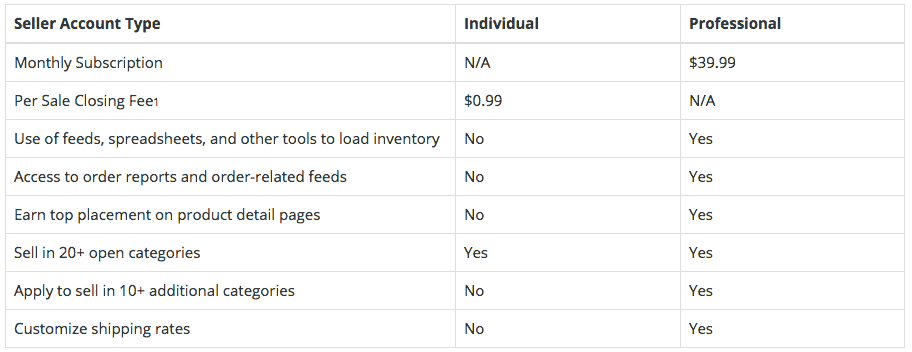
If you're just dipping your toe in at this point and money is tight, feel free to start with the individual account. You'll be able to add products and get familiar with the system, but once you ramp up selling then the professional account is the way to go.
In simple mathematical terms, once you're selling 40+ items per month then the professional account pays for itself.
Another key item in the comparison table above is the ability to earn top placement on product detail pages.
You want that.
This is usually referred to as “winning the buy box” which means when multiple sellers are offering the same item, you're eligible to be the default seller when someone clicks the “add to cart” button.
Another way to help win the buy button is to use Amazon fulfillment for your orders, rather than shipping out orders yourself. This is called FBA and quite simply, it's a game changer.
Let's talk more about what it is and why it works.
What Is Amazon FBA?
Let's start by defining an acronym that has changed the lives of many Amazon sellers:
FBA
This simply stands for “fulfilled by Amazon.”
That means as a seller you have the option of tapping into Amazon's world-class network of warehouses (AKA fulfillment centers) and letting Amazon handle all the delivery/shipping/returns for you.
If you've got some experience selling on eBay or other platforms, you already know that boxing up orders as they sell and running out to the post office or UPS store is arguably the worst part.
Without FBA, a big day of sales might leave you looking like this:
By using FBA you can sell dozens of items in a day to people all over the US and you never have to leave your house.
Sure, you pay a little extra for this service – but as someone who has done it both ways, it's absolutely worth it.
Key Benefits of FBA
- Appeal to Prime Members. People who pay for Amazon Prime do so in part because of the fast, free shipping they get from Amazon. So when you sell FBA, your products are eligible for Prime shipping which gives you a leg up on those sellers doing third party fulfillment because Prime members want to use their shipping benefits
- Amazon Handles Returns. This is a big one for me – when a customer has a problem and wants to return the product, they go through the process of contacting Amazon and shipping it back to Amazon (not you).
- Greater Storage Capacity. Even if you have a big, empty basement – do you really want it stacked full of inventory? Probably not. By shipping all your items into Amazon on day 1, you can take advantage of their storage facilities and really scale up your efforts since your lack of storage capacity at home is no longer a limitation.
- Winning The Buy Box. As mentioned earlier in the professional vs. individual seller discussion, having the buy box when there are multiple sellers of an item is hugely important. While Amazon's methodology for deciding who gets the buy box is a bit of a mystery, having a product that is Prime eligible certainly makes you a candidate for the buy box. In my experience, I've competed against third party fulfilled sellers and had a higher price, but was still able to win the buy box with my FBA item.
You can learn more about how FBA works here.
Arbitrage vs. Private Label vs. Custom Products
As a third party seller you've got a few different avenues you can take to start selling on Amazon. I'm going to break down each of these approaches and give you examples of what they might look like.
Retail Arbitrage Overview
I've written extensively about retail arbitrage in an earlier article, but let me give you the shorter version to make sure we're on the same page.
Retail arbitrage is taking advantage of inefficiencies in the market. In this case, it would be finding a product on sale at a local store, buying that product and then selling it for a higher price on Amazon.
For example, notice that this 2 pack of Crest White Strips isn't sold by Amazon:

It is sold by an Amazon seller called “Good Living USA” and fulfilled by Amazon (FBA). If you scroll down the page, you'll notice there are other FBA sellers also offering up this item:
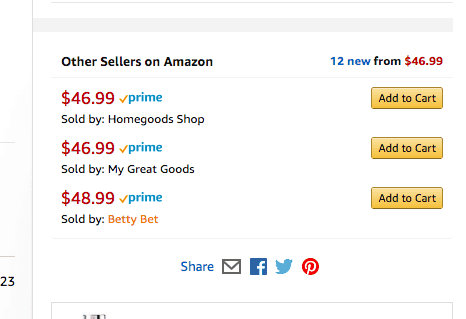
(If you've never noticed this list of other sellers before, that demonstrates why winning the buy box is so important.)
All of these sellers are participating in some form of Retail Arbitrage.
Obviously they aren't official representatives of Crest, they are just individuals or businesses like us who are selling Crest White Strips on Amazon.
But how are they making money on this?
Most likely they are savvy shoppers or maybe follow the Krazy Coupon Lady who posted this deal awhile back when Crest Whitestrips were $8.48 at Target on clearance:
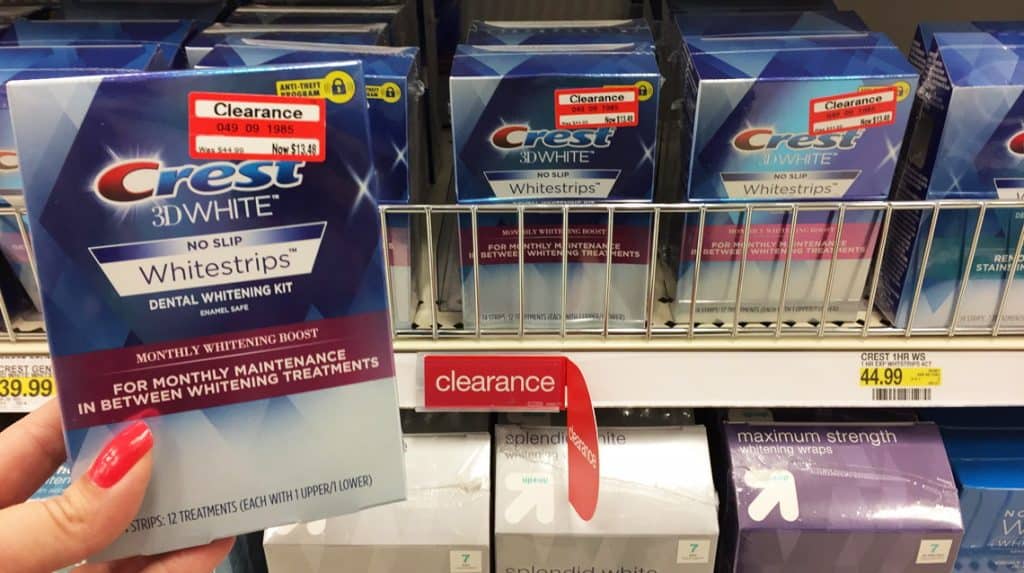
So if they can pick up 2 boxes for about $17 at Target, and the going rate for a 2 pack is $48 on Amazon – there's plenty of margin in between where they can make a profit.
Why Would Anybody Pay That Much?
This is the first objection you're probably thinking, and the most common things friends would ask back in my retail arbitrage days.
Well, let me ask you this – what was the price of Crest Whitestrips at your local Target last week?
I'm guessing that unless you're like my wife who spends about 2 hours per day at Target, you probably have no idea.
The same goes for just about everyone else out there.
If the price for Whitestrips was $1,000 on Amazon they'd probably figure out that something weird is going on and they'd shop around. But if the retail price is normally around $40 – $50 and they see it for $48 on Amazon with Prime shipping, they probably won't spend time looking elsewhere.
Target is just one example of course – there are stores like Sam's, Costco, Walmart, Big Lots, TJ Maxx, and many others where you can shop for clearance deals, one-time buys, and other special pricing that will allow you to pick up items at a deep discount and then sell them around the regular retail price on Amazon.
Pros & Cons of Retail Arbitrage
Weirdly enough, one of the first pros almost functions as a “con” once you're trying to scale up your efforts in the arbitrage game.
That “pro” is the ease of getting started.
While I'm not an expert in non-US markets, here in the USA almost anyone can setup a seller account and start doing retail arbitrage tomorrow. This is exciting if you've never tried and want to get your feet wet.
Another pro is that it doesn't involve much money to start. Think about it – if you found the Crest Whitestrips deal mentioned earlier, you could buy just one unit and send it into Amazon FBA and sell it. You're probably only going to risk about $20 if you start that small.
There aren't many business ventures out you can try for less than $20…
The first “con” of retail arbitrage is also the ease of getting started.
I see that as a problem if you plan to turn this into a serious business because the barrier to entry is almost non-existent. People reading this right now who don't have an Amazon seller account yet could be undercutting your prices by this time next week.
That's a real problem and one of the reasons I gave up on retail arbitrage. It can be super competitive and price is really the only way you can distinguish yourself from a competitor, so if they are willing to sell their Crest Whitestrips for $45, you have to decide if you're willing to go to $44.99 or just wait it out and hope they go out of stock.
There were many times I thought I had a “can't miss” deal only to find out that a dozen other people must have found the same discount I did – so all of a sudden we're in a price war and nobody is making any profit.
That's not fun.
The next con is that it's time consuming to find deals. You can save some time and guesswork by heading out to the store with an app like Scoutify from Inventory Labs.
Scouting apps will let you scan a barcode on any product before you buy it and show you who is selling it on Amazon, what your selling fees will be, if there are other FBA sellers and more – so you know what your profit might be before you ever make a purchase. Here's a preview of what that looks like:
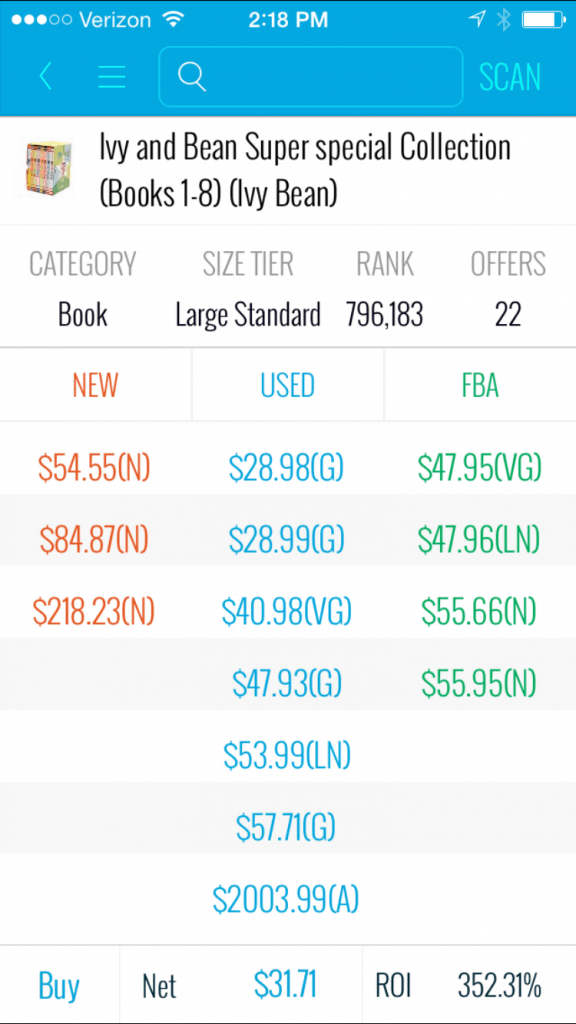
Even with scouting apps making your life easier, you still have to go out and scan for deals.
Not only do you look a little weird walking through a store for 2 hours and picking up everything and scanning the barcode, there is also no guarantee that you're going to find a deal – so it could be a total waste of time.
#1 Tip To Succeed With Retail Arbitrage
Retail arbitrage is still a viable path to get started selling on Amazon, though it's much tougher than it was a few years ago. Brands usually don't like when third party sellers are pedaling their products on Amazon, so more and more brands and products are being ‘gated' or restricted so not just anyone can sell them.
So even though their are less opportunities, there are still opportunities in a variety of non-restricted categories.
My #1 tip for success is to go big or go home.
When you find an amazing deal – buy every unit in the store. I've done it numerous times, and though you'll get some strange looks when you go to checkout with a flatbed full of heated foot massagers, it's worth it if you can turn that into $400 of profit within a few weeks.
Yes, I really did that. Full story here.
Your time is valuable and like I said earlier, you'll have times where you go scout for deals and find nothing. So those times where you do find a no-brainer, you have to cash in big time.
[su_note]Retail arbitrage is a good, low risk way to get started with Amazon – but it's hard to earn a scalable, sustainable income using only this approach.[/su_note]Check out our article comparing two retail arbitrage tools that can help you succeed, Tactical Arbitrage vs Oaxray.
Private Label Overview
Private labeling is defined by Shopify's encyclopedia (who knew that existed?) as:
“A private label product is manufactured by a contract or third-party manufacturer and sold under a retailer’s brand name.”
In terms of Amazon, that means you can launch all kinds of products – skincare, supplements, jewelry/accessories, electronics, and much more without having to actually manufacture anything yourself.
Instead, you can contract with a manufacturer who already makes these products and have them put your label on the item and brand it as your product.
This kind of thing takes place all the time and you may not even realize it. For example, a hair salon that wants its own brand of shampoo isn't going to buy all the equipment to mix and bottle shampoo.
Instead they'll go to a shampoo manufacturer and maybe come up with a scent and then create their own bottle design and have their own line of shampoo created.
In terms of Amazon, most people who private label don't really have any “brand” to speak of – so they function as more of a reseller who picks up items at wholesale prices and then turns around and sells them on Amazon under a fairly generic brand name (and there are lots of ways to find wholesale items to sell from home).
How Can You Find Private Label Products?
The easiest place to start looking for private label opportunities is AliExpress.com
They feature all kinds of products, mostly from Chinese manufacturers that are typically pre-made, ready to ship items.
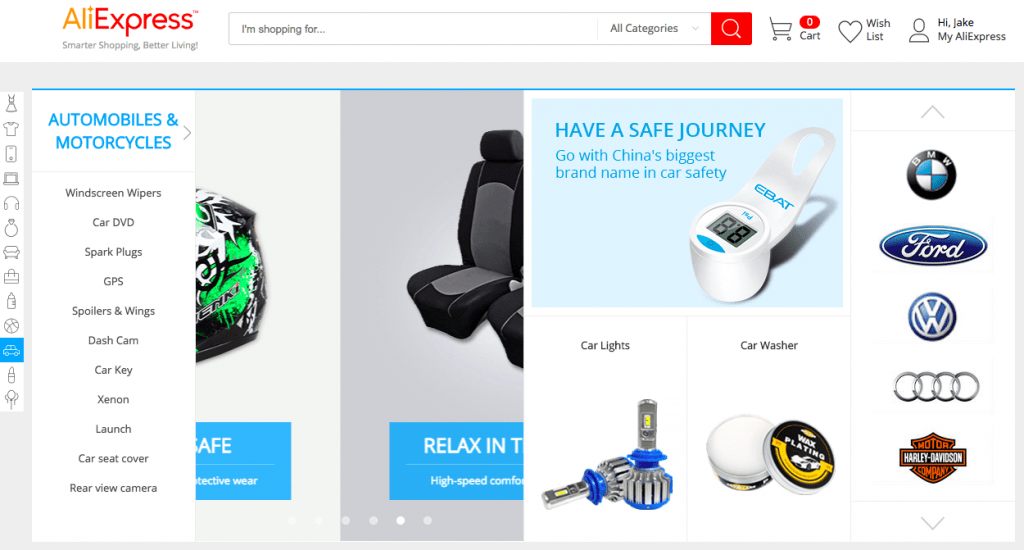
Much of what you'll find on Aliexpress are “me too” products for Amazon – meaning they are going to be mostly items that look identical to other products already selling on Amazon.
Here's an example of a “me too” type of product, when you search for onion slicer/holders:
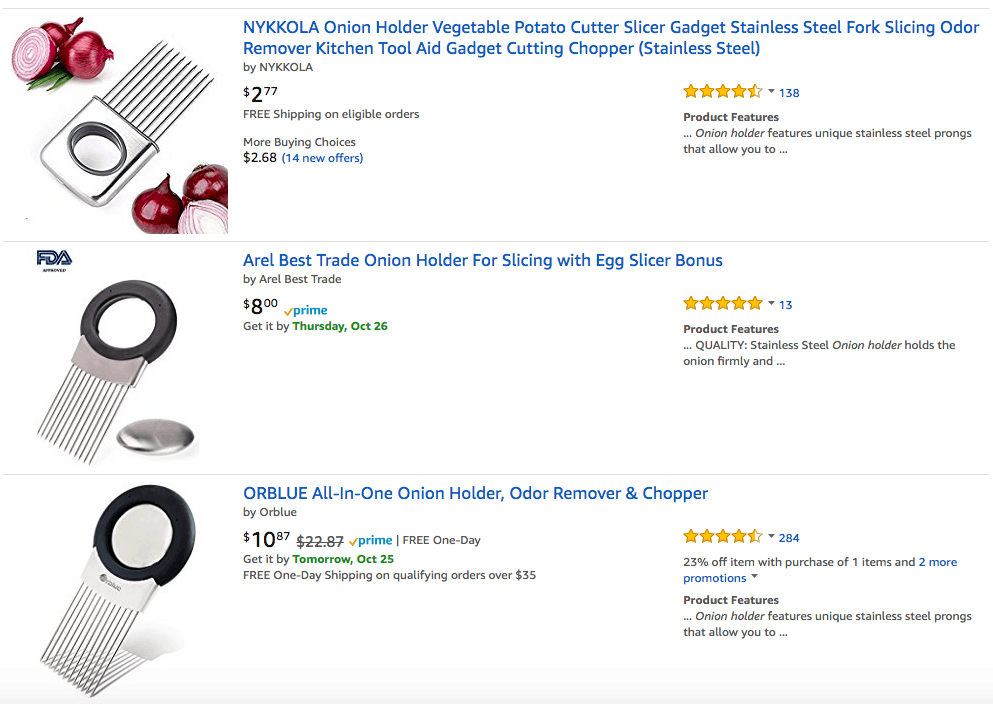
You'll see a lot of product images that look virtually identical, and typically you'll find a bunch of brands you've never heard of like “Arel Best” and “ORBLUE” in this case.
There are pages and pages of products just like this on Amazon, and sure enough when I search onion holder on Aliexpress I find a bunch of them for about $1 each:
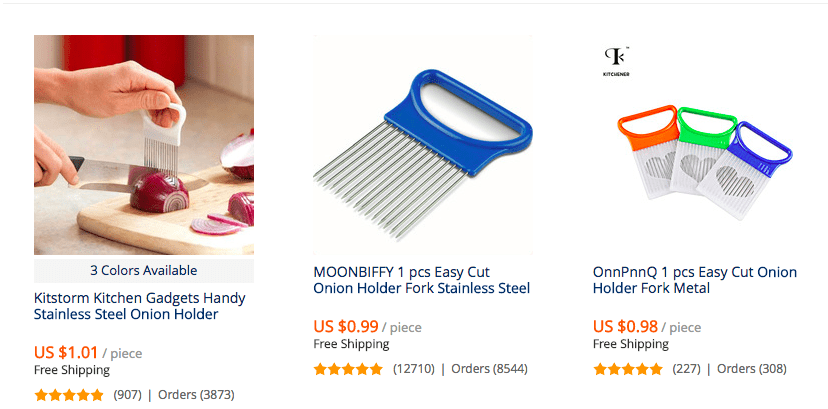
So as an example, you could go buy 100 units for around $100 total and then turn and try to sell them for around $10 each on Amazon.
Sounds easy enough right?
The problem is in many cases (like this one) that hundreds of people are already doing that, and there is no distinguishable difference between your product and many others already on Amazon.
So what's the solution? Here's what we've found worked best for us:
Our Private Label Strategy
The onion holder example I gave above is actually a product we launched on Amazon. We sold some, but it was tough sledding as the competition was fierce.
A couple of our other private label attempts flopped for the same reason.
We did however launch a couple of decent private label products – one of which we still sell a version of and make a tidy little profit on.
Our idea was something I first learned about listening to Steve Chou's podcast interview with Will Tjerlund.
His advice was to pay little attention to tools like Jungle Scout (see Jungle Scout vs Helium 10) which give you an idea of the items that are selling well, and instead use your intuition to look for products that aren't very competitive on Amazon.
His example at the time was drone landing pads – which he claimed only had a couple listings on Amazon.
So if you analyzed the sales of those 2 items, there probably wouldn't be many sales because there just aren't many quality products available on Amazon.
Therefore, you could come in with a private labeled drone landing pad that is better quality and potentially pick up some quick & easy sales.
Our private label strategy was loosely based on what Will shared, so while there are other approaches out there – here's a summary of what we did:
Throw Stuff Against The Wall
We didn't try private labeling nearly as extensively as Will did (he's launched thousands of products) but the key to this strategy is to try multiple ideas.
You don't want to find some obscure product that might sell well on Amazon and buy 1,000 of them.
Instead, Aliexpress will usually have no minimum order so we started very small – maybe only 50 units, which in our case cost us less than $100 to have our product live on Amazon.
You can start even smaller than than if you'd like – maybe with 10 units and try about 20 completely different product ideas.
Don't Spend Too Much Time Initially
When we launch new customized, branded products we spend quite a bit of time getting product photos, optimizing the listing, etc. In the case of our small sample private label products we really just used the product photos directly from Aliexpress.
Believe it or not, some of the product photos on there are pretty high quality.
You can also get product dimensions and details from Aliexpress, so you can quickly turn that into a fairly basic Amazon product page. That's good enough to get you started, and if you find that people start buying your product then you can come back and make improvements in the future.
High Perceived Value
Perceived value is everything. Some “high end” items don't necessarily cost more to make, but people assign a higher value to them for one reason or another, so they are willing to pay a higher price.
Here's an example from an Etsy product:
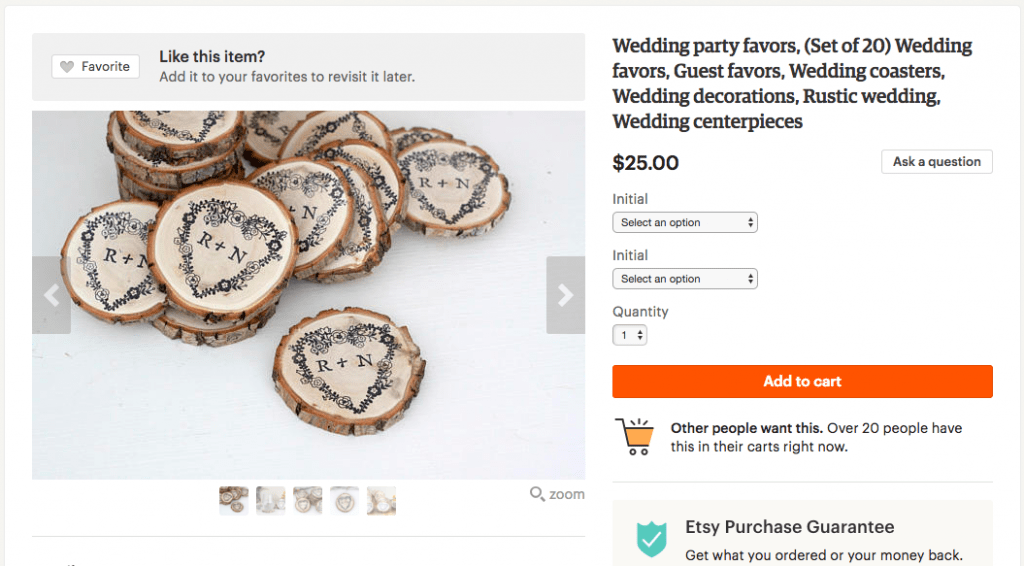
These things look pretty cool and rustic, right?
I'm not knocking the seller at all, but if you really break it down they are cutting a tree branch into small slices and then using a rubber stamp to put your initials on it.
I'd imagine their margins are fantastic…
They've got hundreds of reviews from happy customers, which likely means they've sold thousands of these at $25 per set.
So the materials they use are inexpensive, but the finished product feels special. While you won't be selling custom goods on Amazon, that mentality of finding things with high perceived value is helpful in looking for ideas.
Customize Your Winners
Hopefully, if you buy 20 units each of 20 different low competition products you'll find that at least one of them is selling well.
This should happen naturally if there aren't many competitors on Amazon, but worst case you can do a small sponsored product campaign on Amazon to increase visibility at first.
If you sell out of product, go ahead and just order more from the same supplier on Aliexpress.
Maybe it makes sense to get 50 units this time, or 100.
Assuming you continue to sell well, now it's time to look at making a more custom version of that product which can command a higher price.
[su_note]There is not a set number of units per week that defines “selling well.” It really depends on your product price and margins. For a low priced product that might be 10 sales per day, for an expensive product this might be 1 sale per week. [/su_note]In our most successful private label product, that's exactly what we did.
Our item was actually a decorative item made from paper (low cost, high perceived value) so once we'd sold through about 100 of the Aliexpress products, we hired a designer to make a truly custom design for us.
Then, we went to Alibaba.com and found a manufacturer who made products just like ours and ordered a sample based on our design.
Better Product, Lower Price
When you order from Aliexpress, you are likely dealing with a wholesaler/middleman and not a manufacturer directly. That's ok for getting started, but usually you are going to get the best price by working directly with a manufacturer.
In our case, we were private labeling a paper item that came in a set of 10. We paid around $2 per unit on Aliexpress and were selling them for about $10 on Amazon.
When we found a manufacturer via Alibaba, we were able to improve our product by upgrading from a set of 10 to a set of 20, with a better/unique design.
Believe it or not, our cost per item actually went down to just over $1 per set.
The best part is, we were also able to raise our price a little bit on Amazon and now sell for $15 each.
Updating vs. Creating New
If you're going to go this route of trying some private label products and maybe customizing them down the road, then it's important to note that when you get to the point of customizing, you should be updating/changing your existing product listing – not creating a brand new product on Amazon.
We already had some reviews and were ranking in Amazon search with our private label product and we didn't want to lose that.
So when we changed to a set of 20, we simply edited our product description and images to reflect the new and improved version of our product. This let us continue selling without a hitch since our product was already getting organic traffic on Amazon.
Pros & Cons of Private Labeling for Amazon
The biggest “pro” to doing private labeled products on Amazon is that it's cheap to get started.
As mentioned earlier, you could find an idea and source just a few units via Aliexpress, send them into Amazon and be off and running for less than $50.
Similarly, another advantage is that you can start quickly.
Doing customized products naturally takes time because you are going through versions of samples, sending revisions, etc. In this version of private labeling you really aren't doing any of that – you're just buying an existing product at a wholesale price and trying to sell it for a retail price on Amazon.
So you can try all kinds of ideas and start finding out what works (and mostly what doesn't) within just a few weeks time.
The biggest “con” in my estimation is that it's hard to stand out amongst the competition.
Even if you find a product that's low competition today, there is nothing stopping another private label seller from finding and buying that same product you did on Aliexpress tomorrow and selling it too.
Then, much like the problem with retail arbitrage, you're forced to battle on price.
You're selling for $9.99 and he's willing to take $8.99.
You match him at $8.99 so he goes to $8.49.
Tomorrow some other seller shows up listed at $7.99 and before you know it, you're barely breaking even.
That's why your best bet for a long term strategy is to create semi-custom products based around a brand that you control.
By far and away, this has been the most profitable strategy for both me and Spencer.
[su_note]Some people have turned private labeling into a very lucrative business, so it can be done – it's just harder to distinguish yourself if you're only launching products very similar to others. [/su_note]Custom Product Overview
If you want to build a sustainable business as an Amazon seller, creating your own brand and your own product is the way to go.
When you manufacture and sell a product you've created, you have complete control over the pricing and distribution of that product – something that can't be said of the other methods we've discussed.
I don't want you to get tripped up on terminology, but technically speaking this could also fit under the definition of “private labeling” in that you're still going to be finding a 3rd party manufacturer to make goods for you and you'll be selling them under your brand.
As stated earlier, when most people refer to private labeling for Amazon they are really just slapping their logo or name on a product that already exists.
When we talk about doing a custom product, there's much more creativity involved.
Let's talk about how you can do this.
What Should I Sell on Amazon?
Amazon sells almost everything you can think of, to the tune of about 400 million products on their site (including digital products). That's 4 times more than the amount of products on Walmart.com. Check out this graph from ScrapeHero that shows the top 10 categories of products:

So it would suffice to say that you've got some options in terms of what you can sell.
When we're brainstorming ideas for a new product to sell, we've found the most success when we create products that fit this criteria:
[su_note]Proven Demand + Unique/Added Value = Sales[/su_note]So let's talk about how to start brainstorming on Amazon and then we'll dive into how you can validate the demand and look to add value.
Amazon Suggested Searches
As a side business I have my own brand of sports products that I sell on Amazon. The primary sport is pretty obscure, and when I tell friends about it they almost always ask:
“How did you come up with that?”
The answer is Amazon's suggested searches.
You've probably noticed that as a shopper on Amazon they are giving you auto-complete suggestions as you type in your search. Like this when I type in “neck massager”
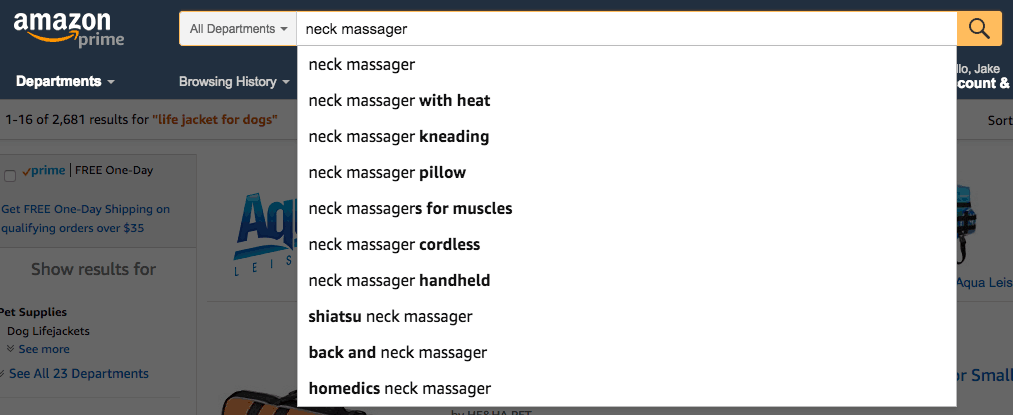
I was intentionally browsing Amazon looking for product ideas that were somewhat unique, but also had proven demand. So I typed in my main product name and the very first suggestion on Amazon was “with ____________” which was a pretty cool add-on feature that I decided to check out.
In the example above, it would be like clicking on the first suggestion of “neck massager with heat” and discovering that there are only a few heated neck massagers on Amazon.
Amazon doesn't release its search data like Google, so you can't know for sure the numbers of people searching for that phrase – but based on the fact that it's the first suggestion after a pretty common product, it's safe to assume it's a pretty popular search variation.
Something tells me that Amazon isn't just picking these top suggestions out of a hat at random…
That said, I do suggest going to a keyword tool like Long Tail Pro, SEMRush or others and get an idea of the monthly search volume in Google for that product.
Here's a look at our example, “Neck Massager with Heat” on SEMRush:
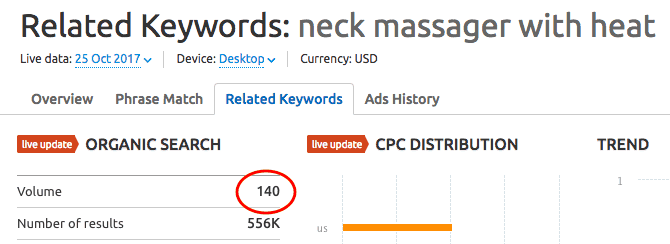
This shows 140 monthly searches for that exact phrase, plus there were a couple of very closely related variations with a few hundred more searches per month.
At this point, I'm just looking to confirm that it's not some fluke that Amazon is suggesting this search. It's nice to see that people are searching Google for this product as well.
In a moment, I show how you can see estimated sales on Amazon (which can be done using an Amazon sales estimator and is a MUCH more important number than Google search volume) but let's talk a little more about brainstorming first.
In my personal situation, I simply clicked on that suggested search from Amazon and found that there was really only one company making a product that truly fit the description.
There were other established products on page 1 of course, but none of them had the feature I'd searched for.
It would be like me searching “neck massager with heat” and most of the page 1 results didn't have a heating feature.
This led me to the logical conclusion that I should be able to rank on page 1 for my primary keyword, simply because there weren't many direct competitors.
I figured that if a few hundred people each month were searching for this particular kind of item and I was one of two choices on Amazon, certainly some of them would buy mine…
(2 years later, I can now confirm that I was right about that).
Customers Also Bought…
As you continue to bounce around Amazon looking for ideas, you may notice that on a product page Amazon will show you other products people commonly bought:

This cross-selling tool that Amazon uses is also an excellent way for you to get ideas that you may not be thinking of.
In the image above, I was looking at a pressure point massage tool found on my earlier search, but now I see that people who buy this also buy reference material like a pamphlet and a book about pressure point therapy.
Could creating some poster or reference material be a good idea?
After clicking on the pamphlet, I see that these pamphlets sell for $6.95 each and have done an estimated $3,155 in sales over the last 30 days according to Jungle Scout.
Now, maybe I don't want to be in the educational poster/pamphlet business – but it's an idea that seems to be working well on Amazon that was nowhere on my radar about 5 minutes ago.
That's what brainstorming is all about.
Keep following these little rabbit holes that Amazon is great at providing and see where it leads.
Estimating Product Demand
Even when following your hunches (like I did) it's always comforting to know that people are actually buying products like yours on Amazon.
Enter Jungle Scout.
Jungle Scout is a tool that takes Amazon's best seller rank along with a few other factors like price and then estimates the amount of revenue a given product has generated in the last 30 days.
To use Jungle Scout, simply install their Chrome extension and when you are on an Amazon search page, click the “JS” button in your browser to see stats on the products you're viewing.
Here's a look at page one from “neck massagers”
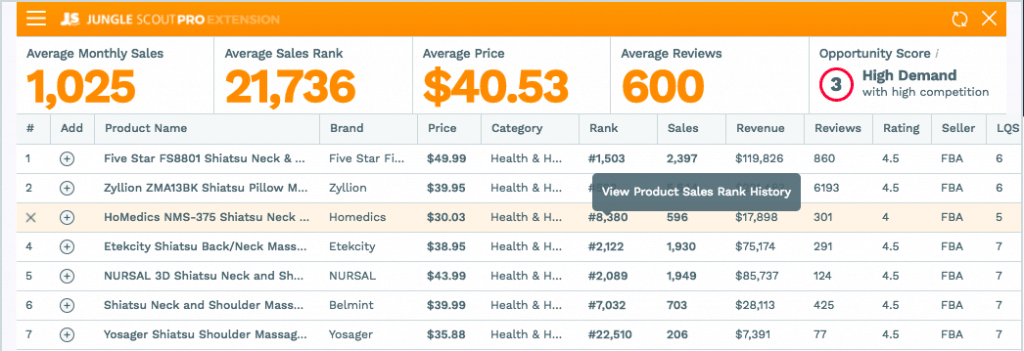
You can see that the #1 result costs $49.99 on Amazon and based on the best seller rank of 1,503 it has sold just under $120,000 in the last 30 days.
That's a decent month.
Also notice that in the Pro version, Jungle Scout helps you with your analysis by assigning an “opportunity score.”
Ideally, you are looking for a higher score – something listed as “high demand with low competition.” That doesn't mean you shouldn't or can't go after a product that has “medium” or even “high” competition – but it is a handy guideline for quick analysis.
Think of it like the KC score in Long Tail Pro
Interpreting The Numbers
One thing that's worth repeating is that Jungle Scout's numbers are only an estimate.
Since I have products of my own, I did a quick check and found that their estimates for the last 30 days were within a couple hundred dollars of my actual sales – which is pretty darn good.
Even if the sales numbers are reliable, they don't account for things like seasonality.
I'd imagine if you look up almost any product in mid-December, their numbers are going to be inflated because of the peak Christmas season.
Thankfully, if you click on the estimated sales number Jungle Scout will show you a longer history.
Here's a look at the top neck massager from earlier:
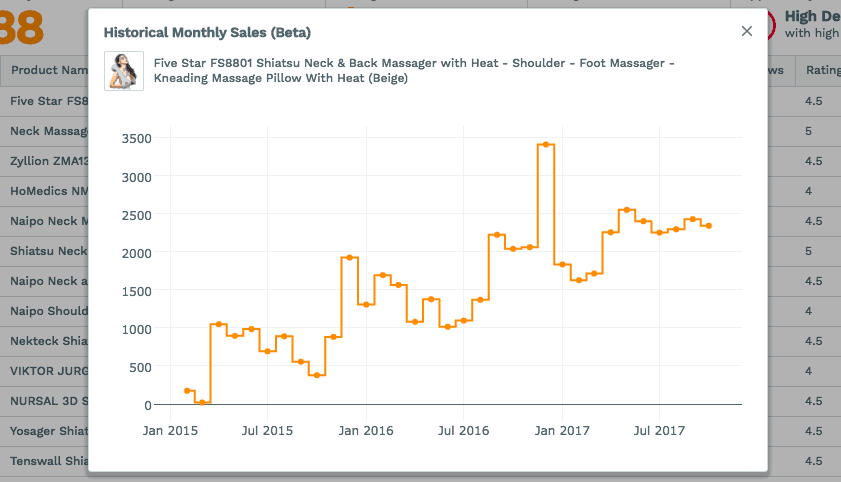
If you hover over each point on the graph it will show you the number, but a quick look here shows me that the product has a pretty consistent month to month performance in 2017.
What you want to check for is more extreme seasonality, like this Christmas wreath which sold 529 units in November and then sold zero units this past summer:
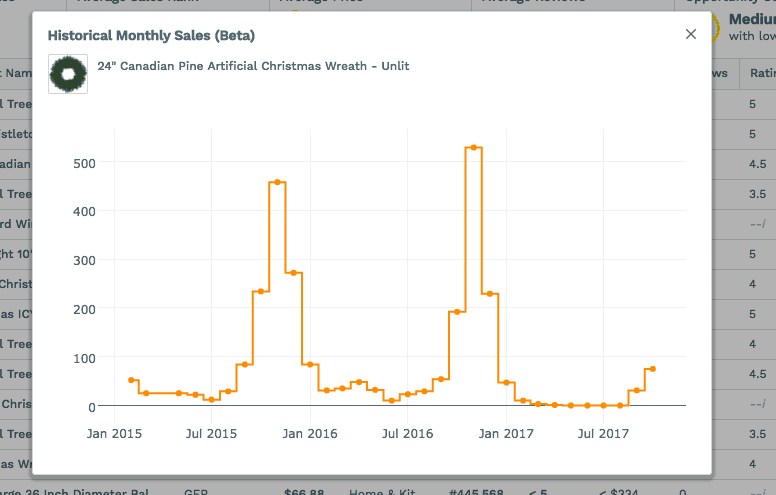
Does that mean you should never do seasonal products?
Not necessarily.
Somebody is going to sell 500 wreaths in November, right?
The point I'm trying to make is that when you're validating your idea by checking demand, make sure the initial numbers you see aren't artificially high because of some anomaly.
If I just looked at this product's 30 day snapshot in November, I might think it's a great product – but a look at the full year tells a different story.
How Much Demand is Enough?
I know you're going to love this answer, but “it depends.”
There is no way to give an across the board answer to that question, so allow me to share my best advice to you based on experience.
Focus On Niche Products.
Remember my first product where there was really only one true competitor? I'd much rather have a bigger chunk of a small market than be one of a million like that onion slicer we talked about.
This is especially true if you're on a limited budget and want to dip your toes into the Amazon waters.
Selling $120,000 per month in neck massagers sounds great, but I know the battle and complexity to actually make that product and get it on page 1 of Amazon is going to be very long and hard.
I'd personally rather launch something simple – maybe like the pressure point pamphlet I showed earlier, knowing that I can get it launched for a low cost, and maybe top out around $3,000 per month:

It's probably not going to go viral, it lacks sex appeal completely, but I'm good with that.
So only you can answer the question of how much demand is enough to make it worth your while, but my advice would be to start small – you can always launch a product with broader appeal later on.
Find A Unique Angle
After you've verified that there is demand for products like the one you plan to launch, then you need to be thinking about how your product will be different.
You don't want to be one of those “me too” products we discussed earlier that looks just like everything else.
Instead, you should be thinking about how your product/brand will stand out from the crowd.
Here are some ways to do that:
Start At Home
Spencer will tell you that his “home goods” brand was born out of his own personal preference. He had a product that he used everyday and he simply didn't like it, and he couldn't really find one out there that was exactly like he wanted.
So he created one.
It turns out, there were thousands of other people out there who were also looking for a product like this too. This basic idea led to a business that he built over the past 2 and a half years and he just sold the business for $425,000.
What products do you use around the house or at work that annoy you?
Have you ever said something like “I wish they made one of these that had a ____________” or “I wish they made these things for kids…” or “I wish this thing was waterproof…”
You probably say things like that all the time but never do anything with the idea.
I'll share more in a minute about how you can take that idea and bring it to life.
Read Product Reviews
One of the best ways to do product research and brainstorm ways to make a better product is to simply read Amazon reviews on competing products.
When you're on a product page, you can click on “see all reviews” and then you'll be able to search for particular words in all the past reviews.
Let's say you were looking at making some grocery cart bags and wanted to find the best constructive feedback on these top sellers. First, click to see all reviews:
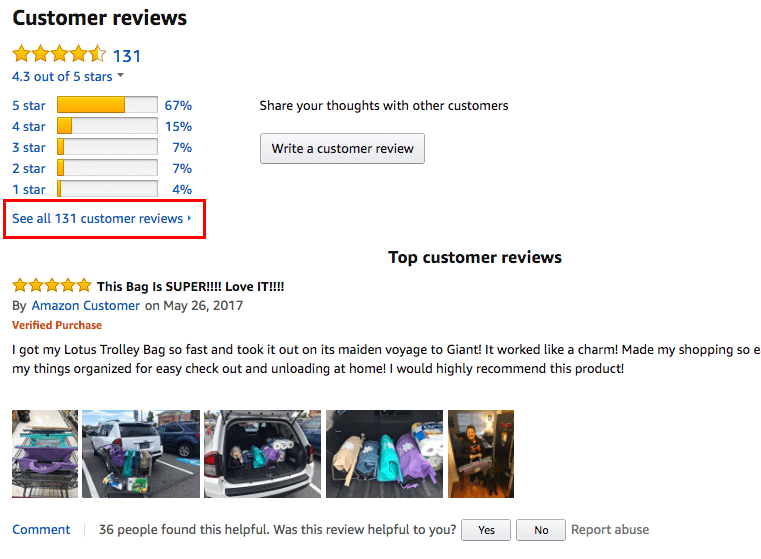
Then, you can search for different words that are commonly used when people are sharing ideas for improvement. I like to search for the word “wish” as an example.
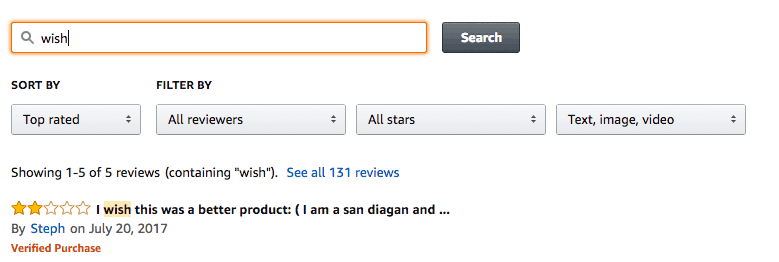
Then, look through the results and jot down any clever ideas worth researching. Here's one about adding a bigger wine bottle holder that might be interesting:
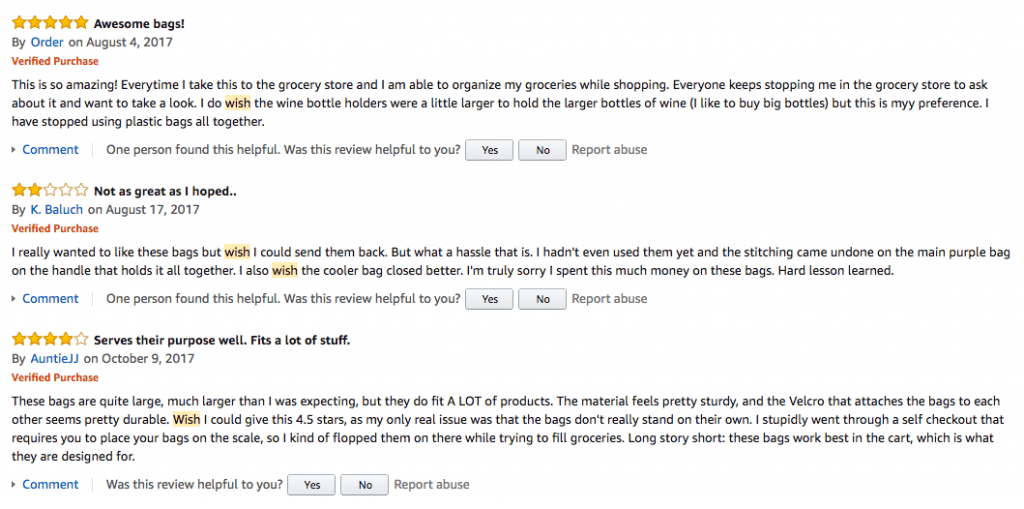
Of course you can try searching other words like “suggestion” and probably many others, as well as just reading through the reviews people have voted as most helpful. Those tend to be more in-depth and share what people really like and don't like about the product.
Products Selling Well Elsewhere
Here's another idea to get your juices going a bit – get off of Amazon and look around.
Other marketplaces like Etsy and even sites like Pinterest and scrolling through Google shopping to see results from other random ecommerce stores will give you some ideas that may not exist on Amazon.
I'm not suggesting that you just go steal an idea, but it's easy to get trapped in Amazon world where you only search on Amazon and then run numbers on Jungle Scout, and maybe you're missing products that people would buy, but they just aren't sold on Amazon yet.
Now that you've got a product idea and are developing a plan to make it unique, let's talk about bringing it to life.
How Do I Get My Product Created?
The first stop on your journey to get a product made is Alibaba.
If you're looking for US manufacturers, then do a quick Google search for “PRODUCT NAME Manufacturer” and see what you come up with. I've tried to work with US manufacturers before, but I've always felt like being such a small fish made it tough to be taken seriously. Maybe you'll have better luck if being made in the USA is a must-have for you!
Alibaba is where we've gone to find manufacturers for the couple dozen products we've launched on Amazon.
It's basically a marketplace where you can search and find Chinese manufacturers that are already making products similar to the one you create.
So you start by just searching whatever product you're interested in. Let's say we want to make a case for your glasses:
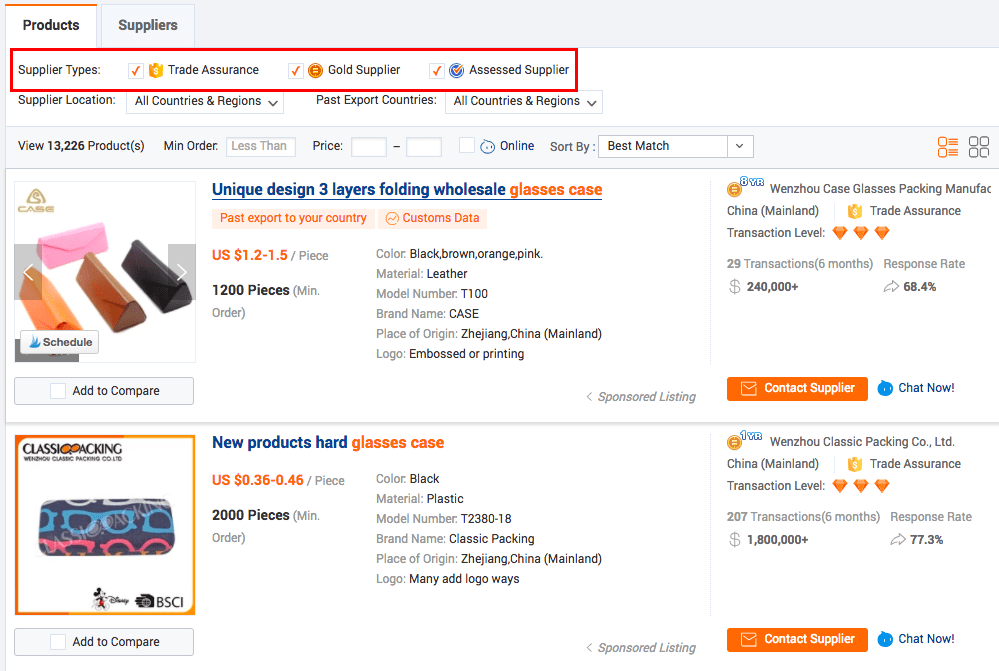
Not every supplier on Alibaba is a good one, so you can use the 3 checkboxes at the top to filter down your list and just show the places which have 3rd party verification and all the telltale signs of being a legitimate business.
From there, simply click on “contact supplier” and send a message like this:
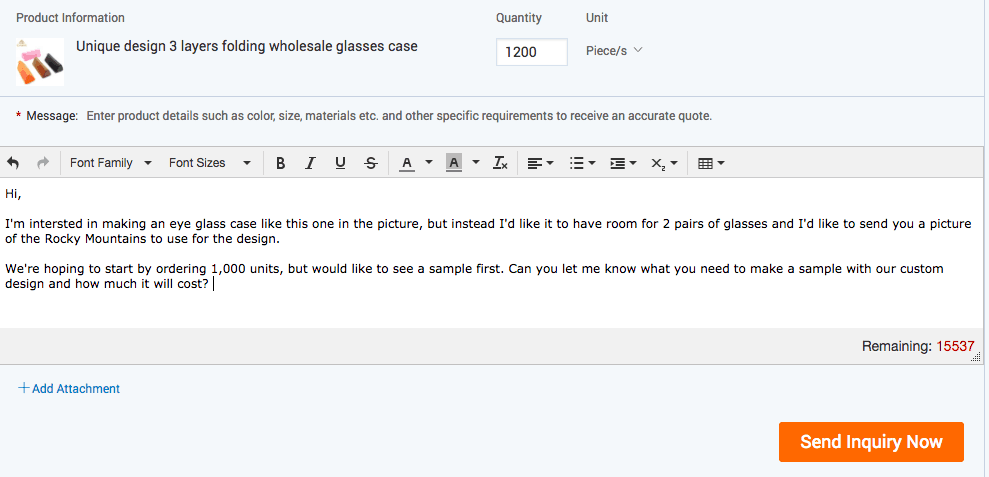 [su_note]Note: You can also put out a request for proposals on Alibaba, but I've always had better luck sending direct messages to reputable suppliers as shown above.[/su_note]
[su_note]Note: You can also put out a request for proposals on Alibaba, but I've always had better luck sending direct messages to reputable suppliers as shown above.[/su_note]
Getting Product Samples
Notice in my note above that you want to ask for a product sample as one of the first steps.
Usually a supplier will be hesitant to quoting you a price on the product until they see your design, know how many you plan to order, and in some cases actually produce the sample.
So you should send as much information as you can right away, and then find out what it's going to cost to make a sample.
How Much Does it Cost?
It depends.
I've found that some items like plastics will have a high upfront cost because they involve creating a custom mould, which is an expensive process. However, things that get printed like paper products, textiles/fabrics that can be sewn into bags/accessories are all pretty cheap to make.
For these more general product categories, you can usually get a sample made and shipped to you for around $100.
How To Find The Best Manufacturers
I look for 2 major things – the quality of the sample and the communication.
If you're dealing with a Chinese supplier they won't have perfect, American English. However, they should be able to “get” what you're saying and have a level of fluency so when you send requests and changes, they can understand what you're asking for.
If you send over a question like “Can you make this hose with a bronze fitting?”
and the response you get is a weird, non-answer like “we make many hoses for all kinds of customers” then I'd just move onto someone else.
As you get closer to actually making the final version and designing packaging, arranging shipping, etc. the conversations are only going to get more detailed – so miscommunication early on should be a big red flag.
The second critical item is the product sample.
Your sample should be high quality, and if it's not – I'd suggest getting a higher quality sample made before you agree to buy hundreds of units.
If the size is off, the stitching is messed up, or some detail is wrong – let them know about it.
I've found that the good manufacturers are eager to fix the issue in order to get your business.
Another way to find quality manufacturers is a tool called Import Genius.
I've not used it personally, but what it does is allows you to search customs documentation and find out where other brands are getting their goods manufactured. So let's say you are making coolers and you know that Coleman makes a high quality product that is made overseas – you can search Coleman and find out the name of the manufacturer who made it. The advantage is you already know that supplier is capable of making high quality goods.
[su_note]Impatience at this stage can cost you. Don't get so excited to launch a product that you accept sub-par quality. The result will likely be negative customer reviews and a product that's tough to sell. [/su_note]Negotiating Terms
Once you've received a sample you really like, then it's time to place an order.
Although I've never had to make a claim, I prefer using Alibaba Trade Assurance as the payment platform – particularly for my first order. This gives some firm timelines as far as when the goods will ship and lets Alibaba serve as an escrow between you and the buyer.
Basically, it helps you avoid paying for something and then the manufacturer never delivering.
Almost Everything is Negotiable
I'm not some skilled negotiator, but I've learned that almost everything is negotiable when ordering products.
Are they telling you the minimum order quantity (MOQ) is 1,000 units?
Ask if you can do a small sample order of 250 or 500.
I've found that in many cases the things that start off as impossible become possible if you decide to not place an order.
If they won't budge on a price, see if they'll agree to covering a portion of the shipping charge.
Another thing we've successfully negotiated is better packaging. If you've ever bought an Apple product, you know what an impact that high quality packaging can make on the unboxing experience. It truly is the first impression of your product to a buyer and sets the stage for how they perceive your product and your brand.
We've found that making a nicer box or designing something that looks beautiful is usually very affordable and sometimes manufacturers will upgrade packaging for no extra cost, but you've got to ask.
If you don't ask, they'll happily send your product in something that looks like a glorified ziplock bag and not think twice about it.
Starting Small
In general, my advice to you is to start as small as you can by minimizing the money you spend on the first order.
Even if you're convinced that you've got the hottest idea since the Flowbee, try to curb your enthusiasm and place a small order to start.
If you sell through your initial inventory, you can always order more and probably even get better pricing by ordering a larger quantity.
[su_note]Breaking even on your first batch of products is a good goal. You may have to sell some discounted units to get the ball rolling, but you can always sell more product once you have an established listing with reviews and organic rankings on Amazon.[/su_note]Shipping Your Product
Remember that the ultimate plan is to use Amazon's FBA program to ship your products to customers when they order. But before that can happen, you've got to get your products from the manufacturer to Amazon.
I'm not an expert in all the nuances here, but let me give you the short version of how it works.
You'll need to find a logistics company/freight forwarder to represent you during the shipping and customs clearing process. A typical arrangement you'll hear from manufacturers is “FOB” pricing, meaning that they'll deliver the goods to the nearest shipping port, but it's your responsibility from there.
So what you'll want is to find a company that has a team in China and the US who can have one of their reps arrange getting the items on a ship in China, then have people here in the US to do what is needed to get the goods past customs, and ultimately send them to you or directly to Amazon.
Depending on the size and value of your items, you might just be able to get by with air shipping via UPS or DHL.
I know this is an intimidating part of the deal for new sellers, so be sure to find a company that specializes in this process who can answer all of your questions. Here's one example of a company that focuses on FBA sellers specifically, but there are plenty of others out there too.
Once you've got a logistics partner on your side, this whole importing process becomes very simple because they can cut through all the confusing terminology and help you know what's going on.
Here's an excellent interview and write-up on this process when you reach this point.
[su_note]Feeling overwhelmed? Don't let something you don't understand stop you from trying this. Countless people have figured it out, and you can too. There will always be some reason for not taking action, don't let import intimidation be one. [/su_note]Creating Your Product on Amazon
Before you can ship anything into Amazon's fulfillment center, you have to have a product listing on Amazon.
I'm going to give you the summary, but if you need it here is a more detailed overview from Chris Guthrie. I'll try to spend more time here focused on the strategy behind a well optimized listing as opposed to just a step by step walkthrough of how to create one.
When you're in Seller Central, you're going to start by clicking “add a product” and then you'll want to look for this little link to create a brand new product from scratch:
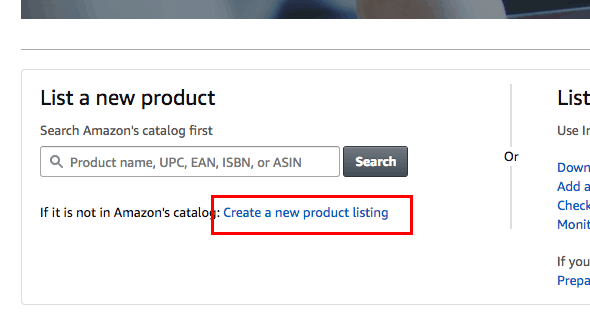
Let me help with a few important points on completing your listing:
Choosing A Category
Sometimes the category for your product is obvious. You'll type in that you're selling a coffee mug and Amazon will suggest common subcategories like this:
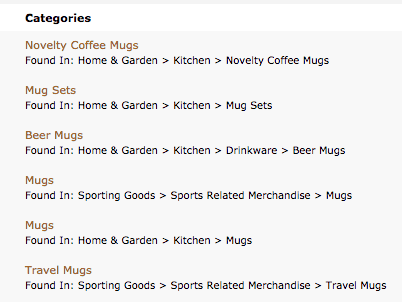
Unless your mug fits better in a category like “travel mugs” just go with the most obvious, general choice – like “Home & Garden – Kitchen – Mugs.”
If you're completely bewildered and not sure which category you fit into, then try looking up a similar product on Amazon and scroll down to the details. You'll see their best seller rank in their chosen category, which should help you at least decide on the higher level category to choose.

I'll admit that sometimes this is confusing – like is my hiking accessory more for “sports” or more for “outdoors?” I've found that the category is usually less important than the other details such as…
Optimized Title & Description
Having a keyword-focused strategy for your listing is very important. There are 4 major places in your listing where you can include the keywords you hope to rank for:
- Product Title (most important)
- Product Description
- Bullet Points
- Search Terms
To illustrate this point, if like my earlier example the keyword I really hoped to rank for was “neck massager with heat” then that phrase really needs to be in my title!
You don't want something like this: Massage-o-matic 3000 By Home Massage Depot
Instead you want something more like this:

See how much more descriptive that is?
Now when people search thing like “shiatsu” and “deep-kneading” they've got an opportunity to show up in the results.
The same goes for your description. Check out this one:
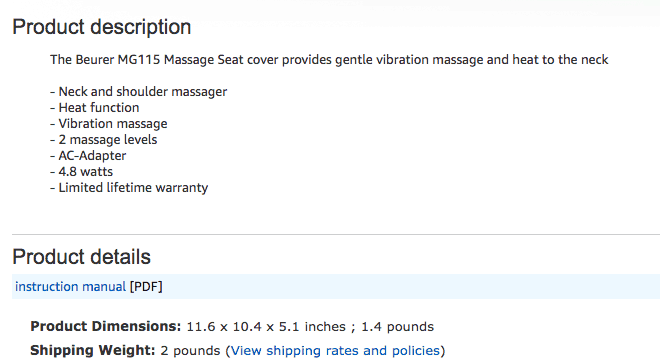
Compared to this one:
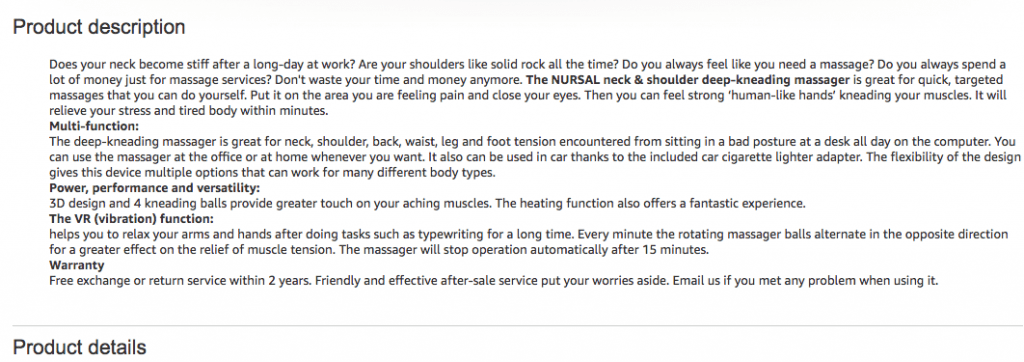
Again, the second one is much more descriptive and uses subheadings to break things up a bit. You've got 2,000 characters you can use, so you might as well make the most of them and give people all the details about your product and how it's going to benefit them.
Now there are the bullet points, which are arguably even more important than the description because they appear near the top of the page. Here are some bullet points that leave something to be desired:
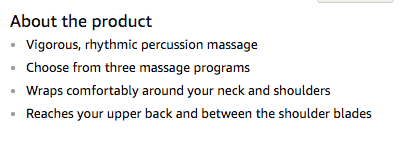
Here's a much better looking set of bullet points:
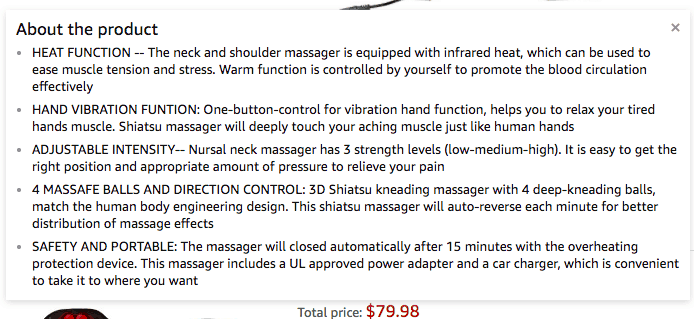
What Keywords Should I Target?
If you're not sure what keywords to target, I'd start by looking at the best selling products in your category on Amazon. What kinds of words do you find in their title and description?
Also here is a free Amazon keyword tool to give you some other ideas.
Your main keyword(s) will probably be fairly obvious, but you also want to make sure you're using your product description and behind the scenes keyword fields to include other variations and words people use when searching for products like yours.
For example, if you were selling a product that helped reduce cat hair and that product could also be used for dogs, make sure “dogs” and “dog” are in your listing somewhere.
[su_note]The best tool I've used for doing keyword research and making sure your listing is optimized is Helium10. I was amazed how helpful it was. Click here to do a free trial. [/su_note]Do I need a UPC code?
Amazon does require a unique product ID in order to create your new product listing, which is most commonly a UPC code.
UPC codes, like import rules, are one of those things that seems to hang people up and prevent them from ever launching a product.
There are plenty of places like this that sell GS1 registered UPC codes that work for Amazon. We've used them and it was fast, simple, and worked as advertised.
High Quality Product Photos
The final essential item you need is high quality pictures of your product.
I've been able to launch a pretty successful brand with pictures taken on my iPhone 6, so I'm not necessarily saying you need to go to Olan Mills and get paid product photos taken with scenic backdrops.
However, you should make sure that you have good lighting and you take photos that show what your product does (ideally in use by a real person).
If you have a small item, it might be worth spending $40 on a little photo backdrop/lighting set like this one on Amazon.

You'll be surprised just how professional your photos can look on a small budget.
Launching Your Product on Amazon
Back in the good ol' days of 2015, the Amazon launch strategy was pretty simple.
You'd go out to one of many review services and give your product away at a very steep discount and in exchange, people would agree to leave an “honest” review.
The result was that you'd get a lot of sales in a short amount of time, plus you'd usually get some positive reviews rolling in within a week or two so people who saw your product were more likely to buy it.
The problem is that reviews like this started showing up everywhere:

A lot of people felt that these incentivized reviews affected the trustworthiness of Amazon's review system, and apparently Amazon agreed. In October of 2016 they changed the rules and banned incentivized reviews.
Immediately the launch strategy for many sellers had to change, and while there is more effort involved you can certainly still do successful launches in 2017 & beyond.
Having A Successful Launch
Here's the deal – if your product stinks, you probably won't sell much of it in the long run. Eventually the bad reviews, product returns, etc. are going to catch up with you – so the first step is doing everything we've talked about in terms of creating a product that has demand, and is made with quality.
Once you've done that, then you can worry about having a successful launch because you know when you get your product in front of shoppers they will want to buy it, and they'll want to leave a positive review about it.
You Can Still Discount Products
The first thing to make clear is when Amazon banned incentivized reviews, they didn't take away the ability to do a promotion or give discounts. They just said you can't give those discounts almost as a bribe to get people to leave a review.
However, if you give someone a coupon – they are still able to leave a review for your product.
So discounting and promotions are still a big part of launching a new product. In fact, you can even pay for a service to manage the whole process for you like Viral Launch, which we've used recently.
They will help you distribute coupons to buyers, all within the rules, with the goal of helping your well optimized listing move up in Amazon's rankings for your target keywords.
If you don't want to use a paid launch service, you can start by just doing a sale price in Amazon and running a sponsored campaign to make sure people see your product when they are shopping Amazon.
Maybe your brand has a presence on Facebook – you can use that platform to give out a special launch discount coupon.
The key is that you want to start getting some sales early on, even if you're taking a loss at the beginning. Ultimately, you're after some reviews, and you can't get reviews until you get some sales.
Automating Review Requests
Since you can no longer ask people ahead of time to give you a review in exchange for your coupon, it's more important than ever to use email follow-ups to ask people to leave a review after they purchase.
We use Salesbacker to automate this.
Most people, even if they like your product, simply won't remember or ever find a convenient time to go back to Amazon and leave a review. Even with email follow-ups in place, expect your percentage of people who leave a review to be in the single digits.
Since the review percentage is so small, it's important that you automate your review follow-up sequence for 2 reasons:
- Encourage people to leave a positive review
- Try to stop negative reviews before they happen
We send people 2 emails after they purchase as follows:
Your Order has Shipped
Since Salesbacker is tapped into Amazon's API, it knows when a customer's order has shipped and can generate an email to send when that happens. Our email looks like this:
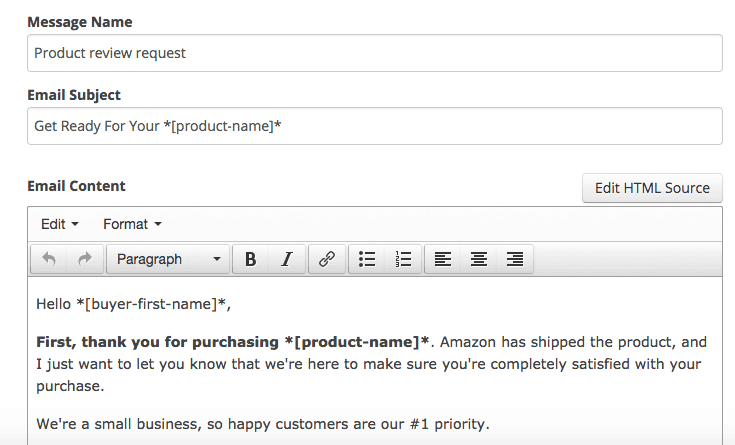
The purpose of this email is to make a connection to the buyer, so they know we're a real small business and that we're appreciative that they bought our product.
We also let them know very clearly that their satisfaction is our top priority, so if they have any questions or issues we are only an email away.
[su_note]Another thing we do with email #1 is explain how to use the product, when necessary. Think of it as a small FAQ where you can educate people on tips to assemble the product, turn it on, etc. [/su_note]Have You Had A Chance to Use The Product?
The second (and final) email we send comes 7 days after they receive their product. Hopefully at that point they've had a chance to use it and are in a position to leave a review.
We don't beg people to leave a review, but we re-emphasize that we want them to be happy and as a small business their feedback is super important to us.
While we don't use language like “please don't leave a negative review!” we do ask that if they have an issues with the product, please contact us directly and we'll take care of it.
I've had people respond to this email several times and let me know about some issue that I can handle for them, like a defective product, and that person will end up leaving a really positive 5 star review.
More than likely if I hadn't have sent the email, they would have just contacted Amazon for a refund and left a poor review for the product.
[su_note]Your goal here is to say something to the effect of “if you love the product, do us a quick favor and leave a review. If you don't love the product, let me know and I'll make it right!” [/su_note]This formula has worked well for us, but feel free to customize it to fit your product.
Maintaining Long Term Success
Automating review follow-ups is one of the most no-brainer, set it and forget it kind of things you can do from day 1 to help maintain a steady stream of positive reviews and just as important, stop negative reviews before they happen.
Both of these are hugely important for long term success on Amazon.
Here are a couple other things you can do to not only make a splash when you launch, but keep the sales rolling in.
Improve As You Go
One of the advantages of doing a small order at first is that you can make improvements to your product before your larger second order. I've found that most reviewers who leave a negative or a lukewarm review usually have some really specific suggestions on what can improve.
Implementing those suggestions when it makes sense will help you avoid those bad reviews in the future and generally make for happier customers as you go forward.
On several of my products I've made small iterations and now have a much better product than I did at my initial launch, thanks to customer feedback.
Build A Brand
The people who do really well on Amazon are concerned with building a brand and a business – not just selling a product. That's not to say you can't make a one-product business and do very well, but for long term success you should be thinking about turning your first successful product into a second successful product under the same brand name.
Then, it might make sense to create a website and start generating your own traffic and sending people to buy your product on Amazon, or even your own ecommerce store, so you're not fully relying on Amazon to generate sales.
That's the exact model Spencer followed for his home goods brand, and he was able to grow and sell that business for over $400K in just over 2 years time.
Check out our article on how to make money on Amazon without selling for more ideas.
Wrap Up
Hopefully you've found this guide helpful on your journey to make money on Amazon.
We don't have all the answers, but we've tried to share what we've learned thought a little trial and error over the last 3 years.
Like anything else, there are going to be things that come up along the way that you won't know the answer to – but that's ok. I'm a big believer in trying things before you know all the answers, because there will always be a “what if” that stops you from taking action.
Don't let a “what if” stop you.
Want to learn step-by-step how I built my Niche Site Empire up to a full-time income?
Yes! I Love to Learn
Learn How I Built My Niche Site Empire to a Full-time Income
- How to Pick the Right Keywords at the START, and avoid the losers
- How to Scale and Outsource 90% of the Work, Allowing Your Empire to GROW Without You
- How to Build a Site That Gets REAL TRAFFIC FROM GOOGLE (every. single. day.)
- Subscribe to the Niche Pursuits Newsletter delivered with value 3X per week
My top recommendations
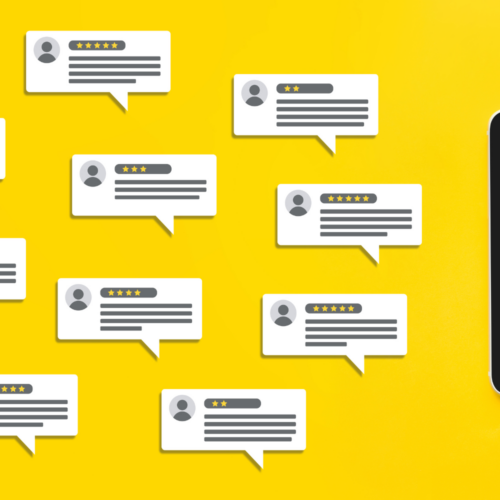









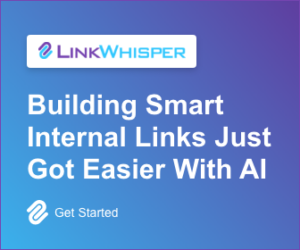
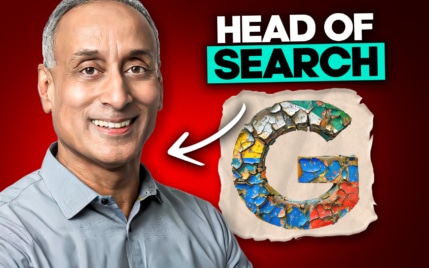





27 Comments
Conversation
Explosive and very insightful!
My question is ; how can people not leaving in the United States dabble into Amazon FBA?
Is location a barrier?
No personal experience there, but I’ve read that it is possible to sell via FBA to US customers no matter where you are located. Further reading: https://www.junglescout.com/blog/how-to-sell-on-amazon-us-from-anywhere-in-the-world/
It is a monster post with all the information required to start selling on Amazon. Would really try it and share my experience.
Jack,
Just finished it. Awesome. Will read it again tomorrow.
Jake sorry for spelling mistake of your name.
No problem – thanks for reading and the kind words.
First of all. Thank you for this amazing resource.
Second, in regards to the jungle scout plugin, do I need the pro version or would the lite version of the chrome extension work just as well?
Matt – I used the free version for a long time and it was fine from what I recall. Another similar tool you can try for free is Market Intelligence from Viral Launch, it’s good for evaluating product ideas you may have in mind.
Thanks, Jake. I really appreciate it the recommendation. Is there any chance you or Spencer work with people trying to get started? Do you guys have any plans on doing anything like Niche Site 2.0 but for Amazon? Or would you be open to something like that?
Thanks for the post, Jake. I’m about to change from Jvzoo to Amazon because some say Jvzoo has loads of scammers. What do you think?
Hi William – I guess it depends what you’re selling/promoting. I’ve never been a JVzoo affiliate, but I’m thinking it’s mostly digital products, right? While Amazon has some digital items, it’s mostly known for its physical products – so I’d go with whatever is a better fit for your audience.
Hi Jake, First of all very nice and useful article. I am thinking to launch of my ebook which is about SEO stuff. I hope your post will be helpful incase i wish to sell it on Amazon.
Whewwwww! Wow, what a lot of incredible info. Thanks so much! Just starting this FBA journey. Looking forward to reading more of your blogs. Cheers!
Thanks, River D!
Wow that’s a HUGE article! I need a bookmark for this. Hard to read it all at once.
Keep up the awesome work.
Hi Jake,
What an amazingly useful post! I am considering Amazon FBA after a few years working on niche sites. For the “throw at the wall approach”, what would be the ideal startup capital?
Thanks, Stew
Hi Stew,
It always depends on what you find, but I’d say at least a few hundred dollars would be ideal so you can afford to try small orders of several different products. If you’re going to try that approach, I highly recommend listening to the podcast interview I mentioned.
Great Summary! Enjoyed reading.
Just a question regarding Emails/”Asking for Reviews”: I use a billing online software connected to amazons API, which I mainly use for sending out bills.
So in effect, you are sending out 3 emails in total: 1. Bill 2. Shipment Notice 3. Have You Had A Chance to Use The Product?
or do you combine Steps 1 and 2? otherwise three messages seem kind of spammy to me.
Also, I gues most modern online billing solutions can connect to Amazon´s api and are able to send emails after a certain time. So where do you see the use of tools such as Salesbacker or do I miss something.
Thanks! Dan
Hi Dan,
Is there a certain reason you have to send a bill? Amazon is the merchant to the customer, so I let them handle sending a receipt. I do like only sending 2 emails. We used to do a sequence of 3 but it felt overwhelming to me.
I try to make sure our emails offer something different than the emails they are already getting from Amazon, which are standard things like order confirmation or “your order has shipped.” Really the first email is hoping to make a human connection, plus proactively address any points of confusion or set expectations about things that other customers had complained about.
For example, one product we sold didn’t have instructions and some people weren’t sure how to turn it on – so I added instructions for turning your product on into our first email.
Wow! Thx for the great post. I follow Spencers for 5 years and i learned so much. THX!
Great post Jake! There is a ton of information here. Definitely one to bookmark.
Awesome post man! That really details a lot. I have one question about sell product on Amazon. If i purchase product form allibaba and sell that product on amazon. There is any problem to selling product and is it profitable or not. Thanks again.
great post and article thanks for sharing
Wow, very impressive and inviting. You have my attention, thanks!
Very well explained information,
I like the way you speaks, im preparing my first ebook and it helped so much
Awesome post, thanks a lot!
That is comprehensive!